Ajanta Cave 19
This cave belongs to the later Mahayana period, is believed to be of 5th century excavation work.
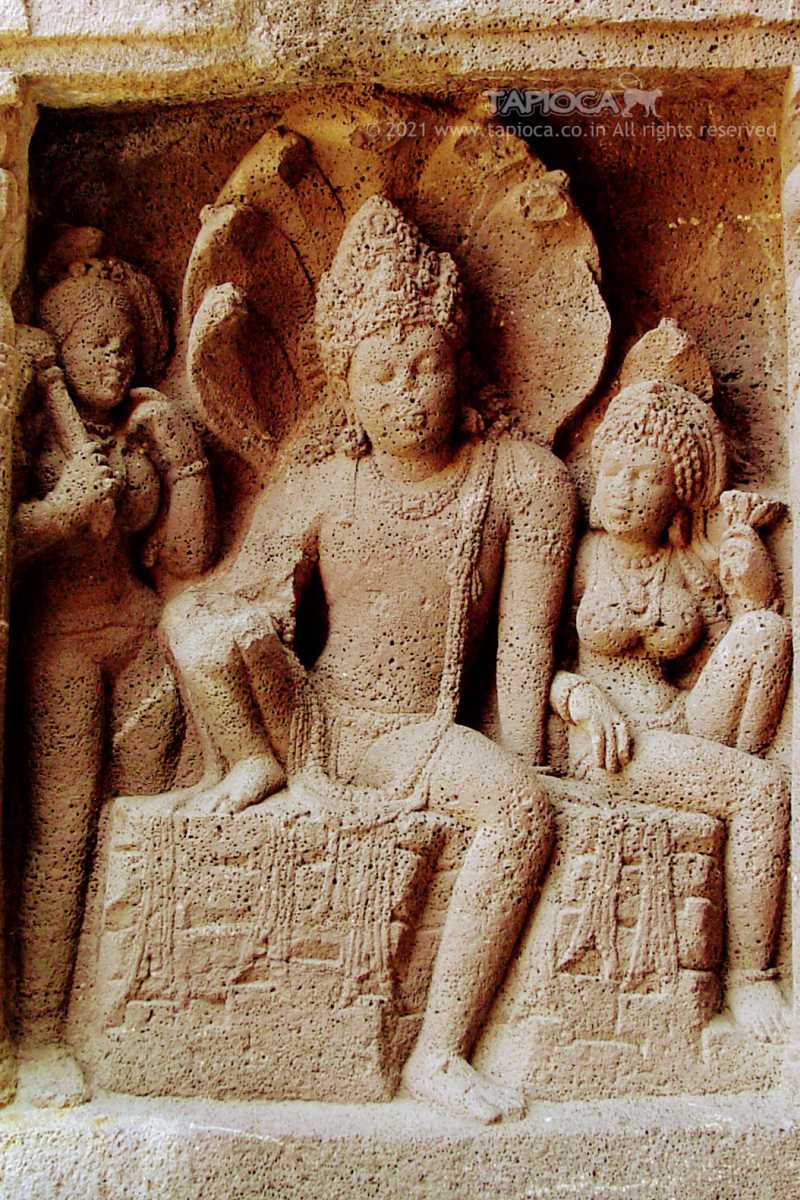
Ajanta
Naga shrine at the porch of the Ajanta Cave 19. A local deity , Nagaraja (Lord of snakes)of the Waghora gorge. Siting next to him is his consort. Note the seven hooded serpent makes a hallow like protection over the Nagaraja's head, while a single hooded serpent over the head of his consort. Also seen it the corner is a female fly whisk bearer
T
his is a massive Chaityagraha measuring about 16 meters long and 7 meters wide. The cave was originally painted fully, but you can still find the traces of the paintings.The highlight of this cave is the elaborately carved facade and the porch with richly carved pillars. Of the 17 pillars inside the cave, 13 resenmels of the Ajanta Cave 1. The capitals are decorated with projecting bracket spoting elephants and riders. Also are images of Buddha an verious postures above each pillars.
The final of the Stupa too is designed artistically, that almost touches the ceiling.
Buddha image on the Stupa is in standing posture. Inside the cave the cornice and the pillar capitals are carved with Buddha images in various posture. The ceiling is ribbed , that imitates wooden design of ceilings, very similar to other Chaityagrahs in the rest of the Ajanta Caves.
The walls of this cave spots may paintings, though in somewhat damaged state. One of it depicts Buddha giving his begging bowl to Rahula.
At the facade , on either sides are life size images of Yakshagas. There is a also a shrine of the snake god , Nagaraj on the left side of the porch. Despite the porous nature of the volcanic rock, these images are one amoung the treasured carvings in Ajanta.
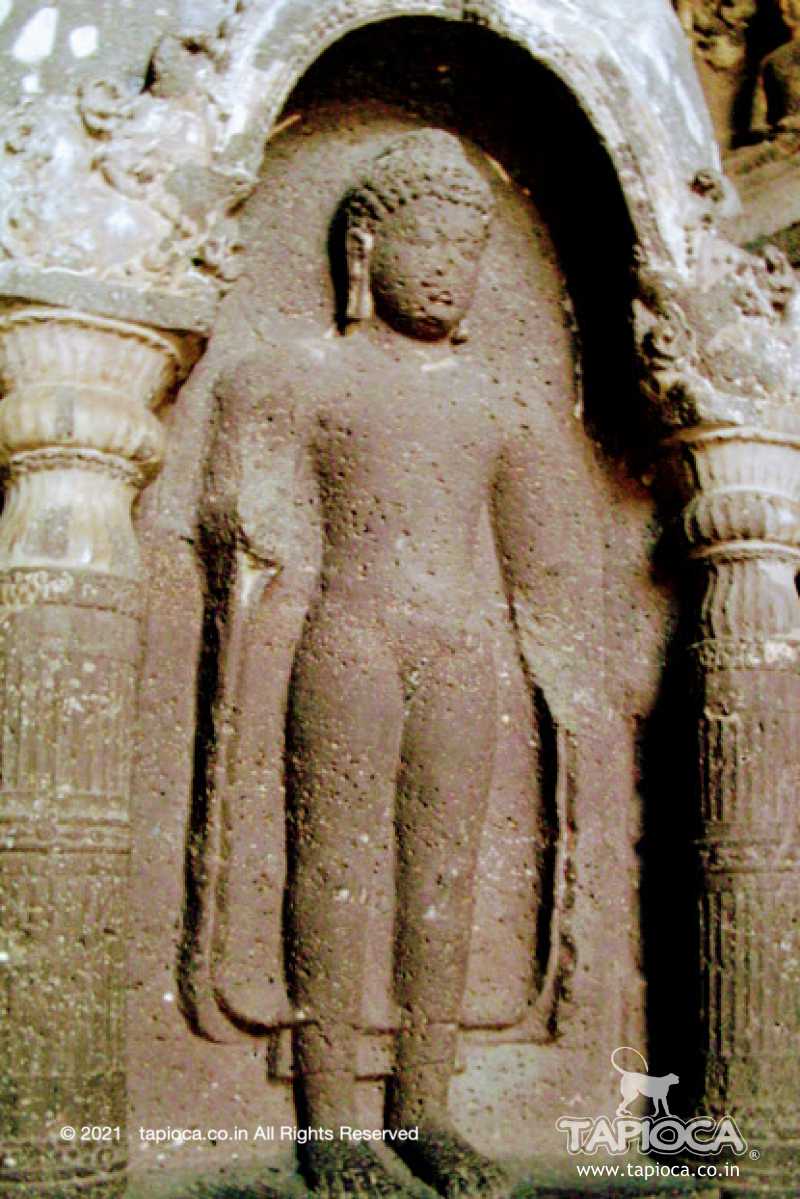
Buddha in Ajanta Cave 19
The unusual image of Buddha standing inside a Stupa
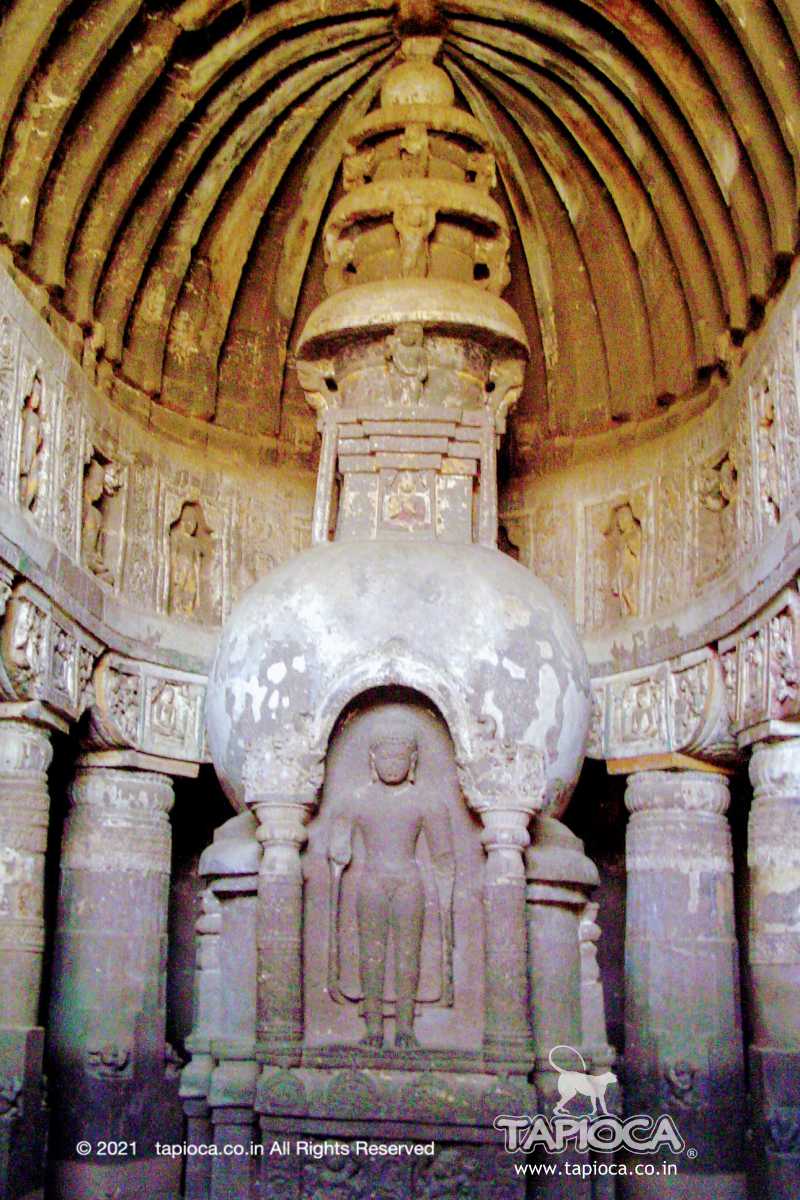
Inside Ajanta Cave 19
Image of Buddha is a convention of later period of Buddhisms.
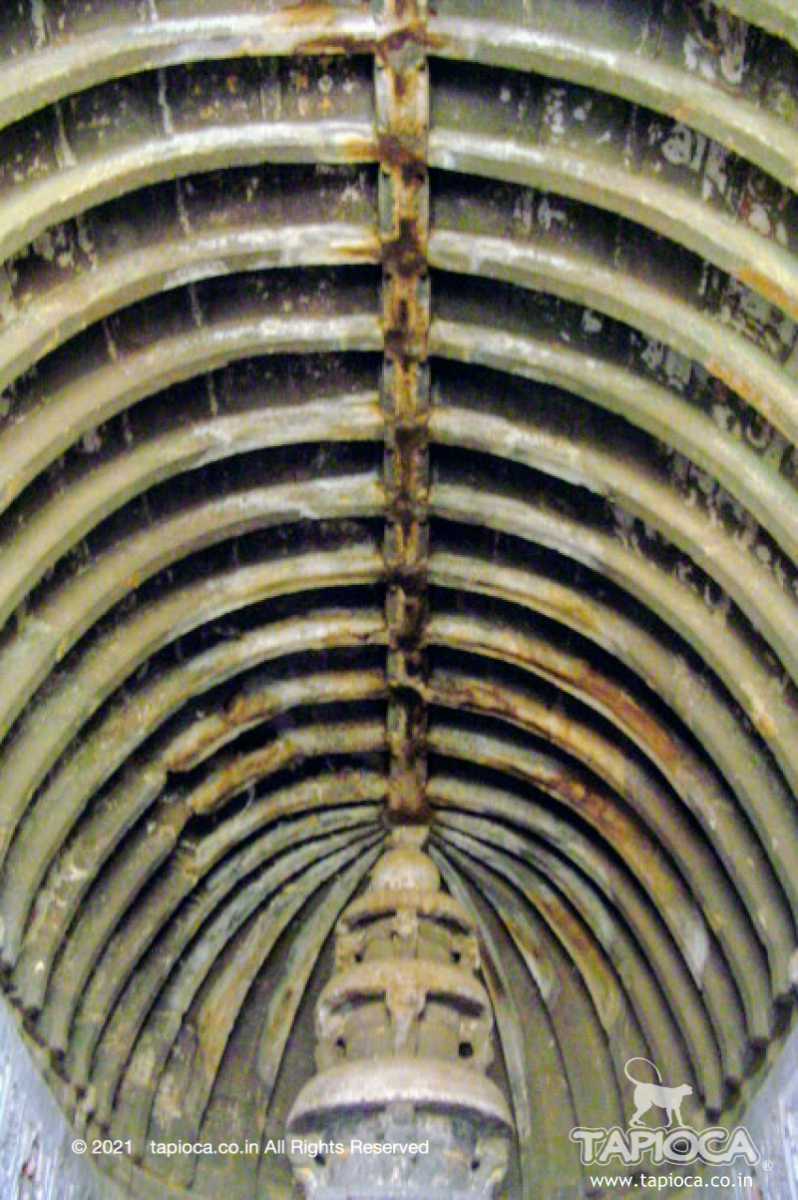
Ceiling Design of Ajanta Cave 19.
The design imitates carpentry work, but executed with rock cutting
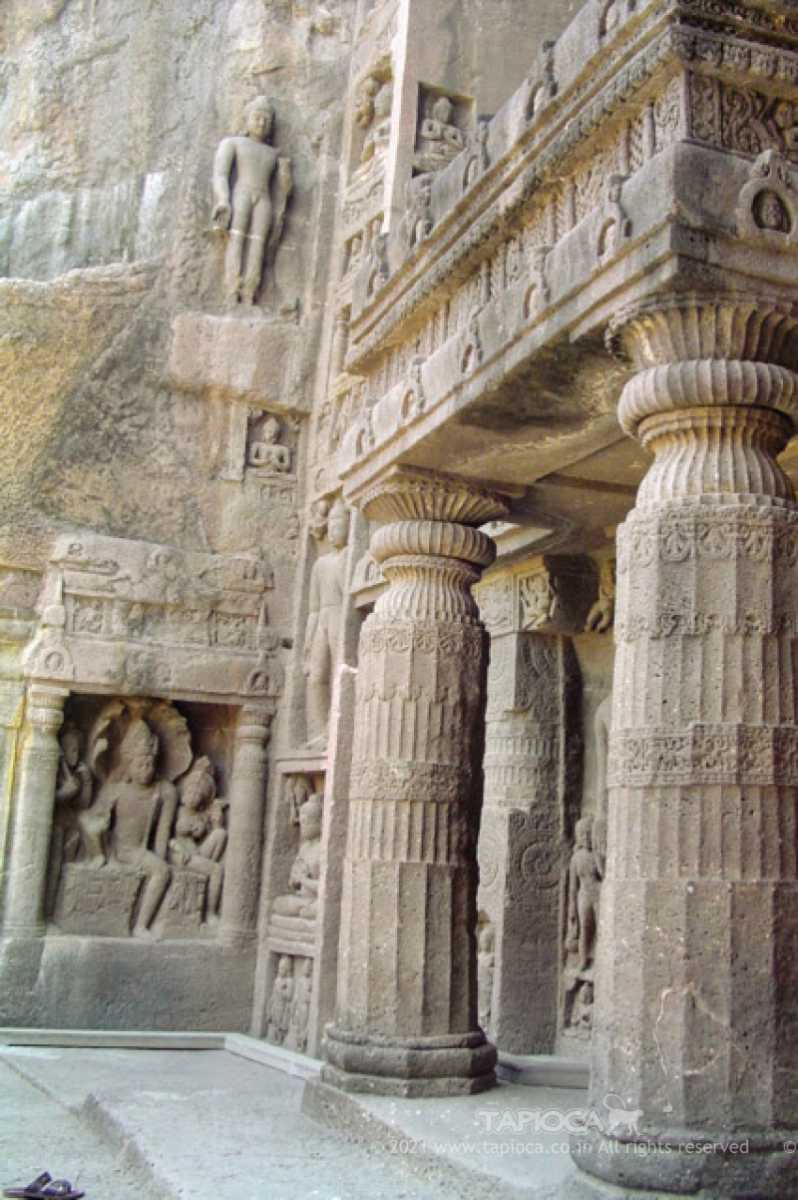
Naga Shrine
Porch to Ajanta Cave 19.
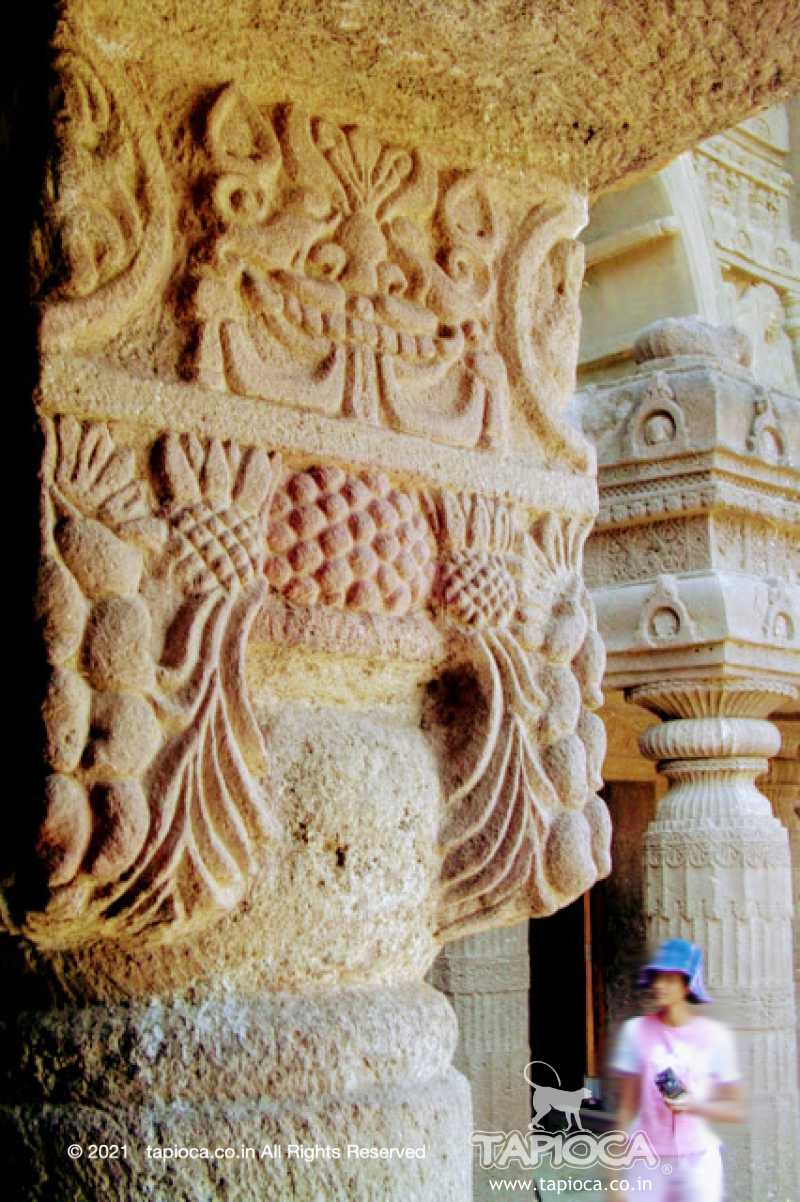
Ajanta Cave 19
Design of the capitals at Ajanta Pillars
